HOW TO FIX “ROUNDED SHOULDERS” FROM BODYBUILDING TRAINING
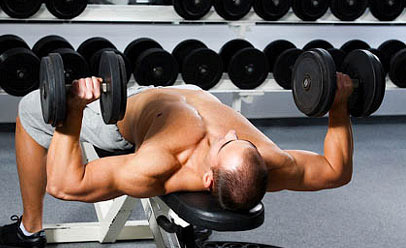
Having a well-balanced training program is not only important when it comes to building a properly proportioned physique – it’s also a crucial aspect of injury prevention as well.
One of the most common imbalances in those who train intensely with weights is the ailment of “rounded shoulders”. In fact, there’s a really good chance that you already have this postural issue to some degree if you’ve been training with weights for any reasonable length of time now.
What exactly are “rounded shoulders”?
In basic terms, you’ve over-developed your pecs and front delts in comparison to your upper back and rear delts.
This is caused by two main training errors…
The first is an over-emphasis on bench pressing movements in relation to rowing movements. Whether it’s intentional or not, most trainees place more value on building up their chest and shoulders than they do their back. (This is a silly error to make in the first place, since a well developed back will cause you to appear far wider and more muscular than a well developed chest will)
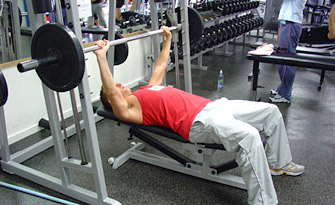
The second is simply an issue of improper form. It’s very difficult to train your chest without automatically hammering your front delts in the process, while it is quite easy to train your back without getting a sufficient amount of rear delt stimulation. (This is usually because you’re training your back in a way that is causing your biceps to take on most of the load. This article outlines 4 fixes for this)
The effects are gradual, but over time, your shoulders will begin to round forward rather than remaining in a neutral position where they belong.
Why is this bad?
Basically, it creates instability in your shoulder joint which can set you up for a whole host of problems, from rotator cuff injuries to shoulder impingement to elbow problems.
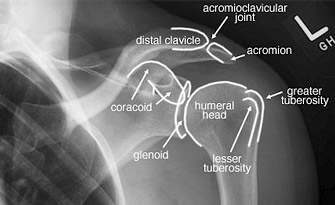
The shoulder is a very delicate and complex joint, and it’s also involved in pretty much every upper body exercise you perform. Injure your shoulders, and your entire program is going to suffer.
Okay, how do we solve this?
The fix can be more complex depending on how severe your imbalance is, but the two main things you’ll need to do are…
1) Strengthen the muscles of your upper back as well as your rear delts in order to pull your shoulders back into the proper position.
Two great exercises you can utilize for this are bent over rear lateral raises (these will isolate your rear delts) and face pulls (these will also hit your rear delts along with all of the smaller muscles of your upper back).
#1: Bent Over Rear Lateral Raises
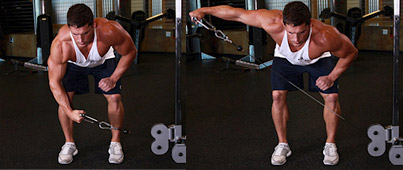
You’ll start off in a bent over position with your upper body just above parallel to the ground, and will then raise the resistance out to your side.
Here are some very important tips to get the most out of this exercise…
Tip #1: Stick to cables rather than dumbbells. While both tools will be effective, a dumbbell provides minimal to no resistance in the lower half of the exercise due to the force of gravity. A cable will keep constant, consistent tension on the rear delt throughout the entire exercise.
Tip #2: Focus on pulling the weight with your elbow rather than your hand.
Tip #3: Perform every rep under strict control and stick with a moderate weight for a slightly higher rep range between 8-12.
Tip #4: Allow your shoulders to relax and hang forward throughout the exercise. When your scapula retracts, the tension is taken off of the rear delt and is placed onto your rhomboids, traps and other smaller muscles of the upper back.
#2: Face Pulls
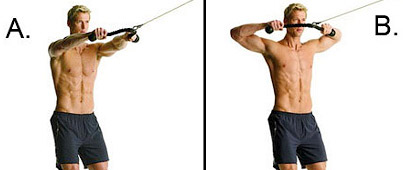
Face pulls are a less common, but hugely effective exercise that should be included in any well rounded bodybuilding routine.
Face pulls are performed using a rope attachment and are essentially a row that is pulled towards your face.
Here are 3 important tips to always keep in mind on this exercise…
Tip #1: Always pull through your elbows rather than your hands, and focus on driving your elbows outward and away from each other as you pull the resistance towards your face.
Tip #2: Avoid heavy, low rep sets and instead perform your face pulls using a moderate weight for around 8-12 strictly controlled reps.
Tip #3: Pause briefly at the end of each concentric rep and squeeze the muscles of your upper back, focusing on pinching your shoulder blades together.
Add these two exercises into your program 1-2 times per week on either your shoulder or back days. These lifts should be included in your program whether or not you currently have postural shoulder problems.
2) Stretch the muscles that are tight and over-developed: your pecs and front delts.
There are several ways to stretch these muscles, but the most basic approach would be to perform the following two stretches 2-3 times a day for 30-60 seconds each.
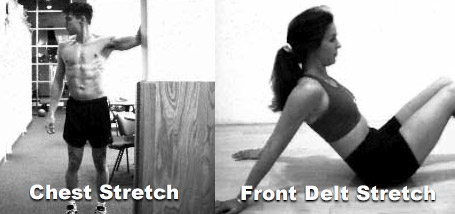
Employ these two basic strategies and you’ll be simultaneously strengthening your upper back/rear delts while lengthening the pecs/front delts to help bring your shoulders back into proper alignment.
Of course, from a foundational perspective, having a well balanced training program from the get go is the most important step of all.
Examine your training approach and ensure that you are placing at least equal focus on your back training as you are your chest training. Make sure that the training frequency matches up as well as the individual sets and exercises. For every pressing movement you perform, balance it out with at least one rowing movement.
Having a well developed physique is great, but if your foundation is weak and off balance, you’ll be setting yourself up for potentially serious long term problems.
If you found this article helpful, make sure to sign up for your FREE custom fitness plan below...




